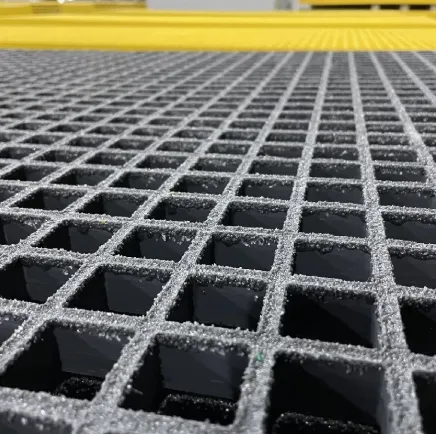loading...
- Nhamba 9, Xingyuan South Street, Dongwaihuan Road, Zaoqiang County, Hengshui, Hebei, China
- admin@zjcomposites.com
- +86 15097380338
- Kugamuchirwa kushanyira webhusaiti yedu!
- Afrikaans
- Albanian
- Amharic
- Arabic
- Armenian
- Azerbaijani
- Basque
- Belarusian
- Bengali
- Bosnian
- Bulgarian
- Catalan
- Cebuano
- Corsican
- Croatian
- Czech
- Danish
- Dutch
- Chirungu
- Esperanto
- Estonian
- Finnish
- French
- Frisian
- Galician
- Georgian
- German
- Greek
- Gujarati
- Haitian Creole
- hausa
- hawaiian
- Hebrew
- Hindi
- Miao
- Hungarian
- Icelandic
- igbo
- Indonesian
- irish
- Italian
- Japanese
- Javanese
- Kannada
- kazakh
- Khmer
- Rwandese
- Korean
- Kurdish
- Kyrgyz
- Lao
- Latin
- Latvian
- Lithuanian
- Luxembourgish
- Macedonian
- Malgashi
- Malay
- Malayalam
- Maltese
- Maori
- Marathi
- Mongolian
- Myanmar
- Nepali
- Norwegian
- Norwegian
- Occitan
- Pashto
- Persian
- Polish
- Portuguese
- Punjabi
- Romanian
- Russian
- Samoan
- Scottish Gaelic
- Serbian
- Sesotho
- Shona
- Sindhi
- Sinhala
- Slovak
- Slovenian
- Somali
- Spanish
- Sundanese
- Swahili
- Swedish
- Tagalog
- Tajik
- Tamil
- Tatar
- Telugu
- Thai
- Turkish
- Turkmen
- Ukrainian
- Urdu
- Uighur
- Uzbek
- Vietnamese
- Welsh
- Bantu
- Yiddish
- Yoruba
- Zulu
GRP Grating Solutions for Industrial Applications
GRP grating panels are widely used in industries requiring corrosion-resistant, lightweight, and strong flooring solutions. Made from glass reinforced plastic, these panels offer exceptional resistance to chemicals, moisture, and UV exposure, making them ideal for harsh environments such as chemical plants, wastewater treatment facilities, and offshore platforms.
The modular design of GRP grating panels allows for easy installation and maintenance. They come in various sizes, thicknesses, and surface finishes to meet specific load and slip-resistance requirements. Compared to traditional steel grating, GRP panels reduce structural weight and eliminate corrosion-related downtime, saving time and costs over the product’s lifetime.


Open and Lightweight: GRP Mesh Grating
GRP mesh grating features an open grid pattern formed by pultruded fiberglass rods arranged to create a lightweight yet strong mesh. This open design provides excellent drainage and ventilation, essential for platforms, walkways, and stair treads exposed to liquids or debris.
The smooth yet slip-resistant surface enhances safety, reducing the risk of accidents. GRP mesh grating is especially popular in offshore and marine environments where corrosion resistance is critical. Its lightweight nature also reduces installation labor and structural load.
Customization options include different mesh sizes and panel thicknesses, allowing engineers to tailor solutions for load capacity and environmental exposure.
Durable and Impact-Resistant: GRP Moulded Grating
Unlike pultruded mesh grating, GRP moulded grating is manufactured by molding chopped fiberglass strands with resin in a heated mold, resulting in a solid, thick grating panel with superior impact resistance.
This type of grating is preferred in applications where high impact loads, chemical resistance, and fire retardance are needed. The solid surface provides excellent slip resistance and can be produced with different resin types to suit specific chemical environments.
GRP moulded grating is commonly used in heavy industrial settings, food processing plants, and offshore rigs where safety and durability are paramount.
Safe and Practical: GRP Walkway Grating
Safety is critical for elevated platforms and walkways, and GRP walkway grating offers a reliable solution combining strength, corrosion resistance, and slip prevention. The open grating design allows liquids to drain quickly, reducing slip hazards.
Lightweight yet strong, GRP walkway grating reduces the load on supporting structures and simplifies installation. It is resistant to UV, chemicals, and temperature extremes, making it suitable for outdoor and industrial use.
Available in various thicknesses and surface finishes, this grating meets international safety standards and is widely used in petrochemical plants, water treatment facilities, and transportation hubs.
GRP Walkway Grating FAQs
What are the main differences between GRP moulded and mesh grating?
Moulded grating is thicker, impact-resistant, and made by molding fiberglass strands, while mesh grating is pultruded with an open grid design for ventilation and drainage.
Can GRP grating panels be used outdoors?
Yes, GRP panels resist UV radiation, moisture, and chemicals, making them ideal for outdoor industrial and marine environments.
How does GRP walkway grating improve safety?
Its slip-resistant surface and open design allow water and debris to drain, reducing slip and trip hazards on elevated walkways.
Are GRP grating panels customizable?
Yes, they can be customized in size, thickness, mesh size, and surface finish to meet specific load and environmental requirements.
How long do GRP gratings typically last?
With proper installation and minimal maintenance, GRP gratings can last 20 years or more in corrosive and harsh environments.
-
Revolutionizing Industrial Safety with ZJ Composites' Mini Mesh GratingNewsNov.14,2025
-
Premium FRP Profiles and FRP Grating Revolution for Global WholesalersNewsNov.14,2025
-
Ultimate Strength with ZJ Composites FRP Profiles for Wholesale SuccessNewsNov.14,2025
-
ZJ Composites Covered Grating – The Durable Flooring Solution for Smarter Industrial SpacesNewsNov.14,2025
-
Mini Mesh Grating Enhancing Strength and Style in Every ProjectNewsNov.14,2025
-
FRP Pressure Vessels by ZJ CompositesNewsNov.14,2025
-
Transforming Industrial Spaces with Advanced Frp GratingNewsNov.11,2025
